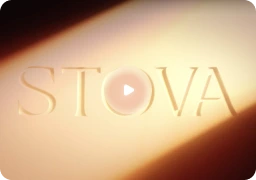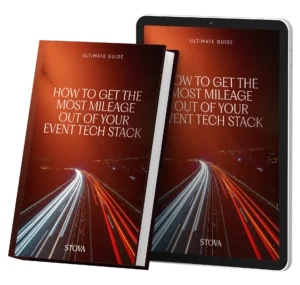The swing to niche in event tech industry voices speak out
March 26, 2019

The following article was originally published by Corporate Event News. To read more of their content go to www.corporateeventnews.com.
If the past several years go down as “The Era of Acquisitions” in event tech, 2019 and beyond just may become known as “The Era of the Niche Solutions.”
We’ve all watched as smaller event tech companies were snapped up by a few big names, as the massive end-to-end platforms expanded to deliver the ever-elusive Holy Grail; the all-in-one stop for event planners. Yet Corbin Ball of Corbin Ball Associates recently pointed out that we have to look at another trend happening concurrently in our industry — toward small, nimble companies pulling in best-in-class providers to build event-specific solutions based on exact requirements.
“We are seeing a number of high profile events taking this swing toward niche in event tech, to create the kind of user experience that high profile events demand,” Ball explained in a recent video conversation on Endless Events with Brandt Krueger.
Since hearing Corbin’s comments, I’ve talked to some event industry pros to get their perspective on these two trends, and some truly intriguing ideas keep surfacing around which is “right.” Let’s break it down.
The swing to niche is a reality for many events
Something Marcus C. White, CMP, founder of MCW Events said in a recent conversation really resonated with me.
“Some events are mass market, like Target. There are also events that require a higher level of customer experience like, say, what Nordstrom might provide,” White explained. “Knowing your client and the audience you’re speaking to really helps to achieve a boutique-level, white glove, bespoke and highly personalized shopping experience when called for.”
“And the tech you choose is a huge part of that,” White continued. “You can’t build a Nordstrom experience inside a Target shop. It just doesn’t fly. Not because one is better than the other, but they are truly two different things – doing the research to understand the story being told will pay huge dividends later in the planning cycle.”
This idea of “boutique” or niche management is highly relevant to the future event tech landscape. Danalynne Wheeler Menegus of Corporate Event News points out an apparent shift in priorities for event planners, based on Eventbrite’s 2019 industry trends report.
“In the 2018 report, the No. 1 reason cited for hosting events was ‘to make money,’” Menegus explains. “In 2019, the top two reasons given were ‘for education and training’ and ‘to build community.’”
Given this, it makes sense to me that so many in the industry are having different conversations around their event goals and how they’ll get there and are focused on serving a carefully curated tribe.
“I think the industry’s hit saturation with mass; big name, massive events are plateauing in popularity,” said Nick Borelli of Borelli Strategies. “I see a trend toward shedding quantity in favor of quality … we’re moving away from a focus on amassing attendees and focusing on getting the right attendees and delivering them hyper-value.”
More value and more return from each attendee — this is what I see as the real value of these highly-complex, highly visible events, whether there are 50 or 50,000 attendees in the room. In my opinion it’s not about how many. It’s about how closely your event goals are aligned to your attendees, and how well you can deliver a phenomenal, value-rich experience at every turn.
Is a boutique-style, niche tech deck the right answer for you?
By moving off a one-size-fits-all platform and toward a bespoke-built registration solution, many event professionals are finding they can save a tremendous amount of internal or contract hours — not just in internal development/coding costs for trying to “customize” a configurable registration site or building workarounds, but across the board. For example, with a bespoke-built scenario, hotel and registration data live in the same silo, eliminating a lot of manual work and potential errors; form completion rates are often higher because a bespoke experience is typically more intuitive and more personally relevant (a key element of an elevated registration experience); and a strategically built tech deck solution puts the planner in control, as it’s built around their needs … not the platform’s.
“The benefit for meeting planners is that they can choose an assortment of specialized event software products that work together easily – an event tech deck,” writes Ball in his excellent article, The Platform of the Event Tech Deck — What is the Best Technology Choice for Event Planners. “Meeting planners are able to find highly customized solutions using multiple technology products with the ability to extract valuable marketing data as if they were a single platform.”
Surprisingly to some, the cost of this kind of truly bespoke tech stack has proven to be very affordable.
“Depending on the complexities of your event, having something like Stova as the base and building from there makes a lot of sense. Having one source of truth should be a top priority,” White said. “The ability to tie in your badging system, RFID tool and your Event App build to one place is not only efficient from a resource and dollar spend, but that one source of truth is truly priceless when it comes to peace of mind.”
Because most modern event tech is built from proven asset libraries of code, in ways that integrate beautifully via shared API protocols, the cost is nowhere near what it used to be to have an entirely bespoke solution built for your specific event. The other advantage is that many of these tech solutions are not based on the number of attendees – your cost doesn’t go up depending on how many people attend.
Yet the real cost factors lie in what you might be giving up by choosing a mass market platform when your event really needs a niche approach. What are your event goals? What kind of event experience must you provide to deliver on those goals? Do your attendees expect a Target-style experience, where they get what they need, know what to expect and walk away feeling pretty good? (And there’s nothing wrong with that; a good event is a good event.) Or do your attendees need something extraordinary, a one-of-a-kind, high-touch, white glove Nordstrom-style experience?
The pros and cons of the one-stop stop
Clearly, there are upsides to the massive, all-in-one solutions.
“One of the benefits, of course, is one-stop shopping for your tech needs,” Ball said in a phone call. “You decide on the vendor; you choose from their existing menu of tech offerings. With fewer vendors, there is less negotiation time needed.”
I get the appeal. An all-in-one platform will have a similar user interface between components and should (at least in theory) offer robust data integration among all the components.
Yet there are downsides, as Ball notes. Aside from the massive challenge of meeting the needs of ‘any and all’ on a platform designed to accommodate the masses, there’s also the concern surrounding data and legacy code.
Data integration, Ball explains, has historically been a tough nut for the industry to crack — especially in older, legacy systems. While the big platforms have made some progress, there’s huge value in working with newer code built for the data age.
“I think that artificial intelligence is really going to come in through the back door in some ways,” Ball said. “It’s up to the tech companies to provide event planners guidance in how AI will integrate with their data to create real insights. Upgrades to meeting tech functionality and especially commonality (like we see in the Fuzion by Freeman partnership) favor the new, nimble cloud-based products that are designed at their core to be adaptable to this kind of data usage.”
Borelli suggests “this kind of one-stop consolidation may make things easier, but in order to work for the bottom line, the company has to take a ‘good of the many’ approach.”
This leaves events with specific or highly complex workflows out in the cold, forcing them to create workarounds to meet their needs, or adapt their events to the technology itself. Still, he believes it bodes well for the industry to have its Goliaths.
“It’s a good sign for any industry to have some giants doing really well. It indicates a healthy industry overall,” Borelli explains.
Are we sacrificing innovation on the altar of expediency?
According to recent stats, the events industry is in a state of good health. CEN’s Menegus notes the industry is both financially healthy and growing, using statistics from the Eventbrite report.
“North American survey results and comments are positive, indicating industry growth. Just under half of survey respondents (49 percent) said they plan to host more events in 2019 than they did in 2018,” she writes. “Few reported any reduction in budget.”
In this growing market, the big guys get bigger. Yet there’s an inherent risk in the rise of the giants, according to Meeting U’s Jim Spellos.
“I’m doing an awful lot of reading where a lot of folks are talking about it’s not good to have all this power within a very small number of companies, in our industry or any industry,” Spellos said in the Endless Event video conversation. His concern is you’ll have a few big powerhouses writing the rules and stifling creativity.
Fortunately I believe when the ecosystem is healthy enough to support the Goliaths, there is also room for the Davids — if they bring the right solution to the table.
As Ball says, “you don’t have to be everything to everybody. You can be good in one little component and create a very strong API and be part of a consortium that can be added to an event tech deck.”
Borelli agrees, saying this kind of agile “best in breed” solution is the way smaller tech products are competing with the “gorillas” in the marketplace.
“I’m a big proponent of ‘staying in your lane’ when you are really focused on evolving technologies faster,” Borelli explained. “Allow companies to focus in on the things they are exceptional at. A solid shared API makes the experience, from the user’s point of view, just as seamless as the massive platform approach.”
We have this discussion so often with potential clients and event partners, and it all starts by taking a deep, strategic look at what you want out of your events. Questions? Opinions? Let’s talk.
Whether your event is virtual, hybrid, or in-person, enhance your attendee’s journey with an event ecosystem built for your audience. Ready to walk through Stova's event technology solutions? Schedule some time with us today.


